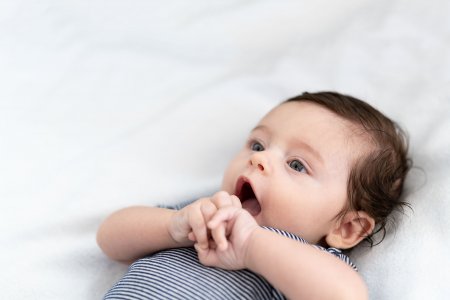Understand my skin
At what age does atopic dermatitis start?
Atopic dermatitis is an inflammatory skin condition that creates an intense pruritus with chronic evolution.

Understand my skin
Atopic dermatitis is an inflammatory skin condition that creates an intense pruritus with chronic evolution.
According to statistics, 10–20% of children and 1–3% of adults are affected by atopic dermatitis, and the prevalence of this condition has increased threefold in the last 30 years, especially in developed countries. In Scandinavian countries, the rate of atopic disease is very high (25%).
Generally, atopic dermatitis begins in childhood, in 85% of cases before the age of 5 years, and in 55% of cases in the first year of life. In 10-15% of cases it starts after the age of 15, and in 5% of cases after the age of 40. The average age of onset is around 8 months, but in over 1/3 of cases it may begin earlier than 3 months. The major common symptom being pruritus.
In infants and toddlers (0–2 years) the lesions have an eczematous appearance with erythema, oedema, vesiculation and exudation, with a predilection for the cheeks, chin, forehead, the centrofacial region, and sometimes limbs and the trunk, areas where it has the appearance of nummular eczema. By the age of 2 years, xerosis begins to appear. After the age of 2, the eruption becomes chronic in the form of highly pruritic lichenified plaques with localisation on the flexion area of the limbs, ankles and behind the ears.
At school age, there are lichenified plaques with traces of over-infected scratching over the back of the hands and folds.

At adult age, lichenified lesions predominate, accompanied by infiltrated papules and excoriations. The clinical picture of atopic dermatitis in adults has a characteristic lesion polymorphism: dry and rough skin, lichenified plaques, papules of different sizes, sometimes with eczema lesions. A characteristic feature of this disease in adults is resistance to treatment of hand, retroauricular and perioral lesions. Other common clinical signs are xerosis, keratosis pilaris, palmar hyperliniarity, dry dermatitis of the hands, nipple eczema, chronic angular cheilitis (inflammation of the lips), white pityriasis of the face, perifollicular eczema, facial pallor, periorbital pigment, Dennie-Morgan folds, recurrent conjunctivitis, bilateral cataracts, white dermographism, a proneness to frequent skin infections.

Atopic dermatitis is associated with other conditions in 30–35% of cases, such as: atopic conditions (bronchial asthma, vasomotor rhinitis), various allergic disorders (urticaria, dermatitis, insect bites), immunodeficiency syndromes (Wiskott-Aldrich syndrome, Buckley syndrome, Louis-Bar syndrome), autoimmune disorders (vitiligo, pelage), metabolic disorders (phenylketonuria, amyloidosis), genodermatosis (ichthyosis, Netherton syndrome, ectodermal dysplasia).
The onset of illness in childhood and its persistence in adulthood is the premise of an exacerbation of atopic dermatitis.
Dr Ciocan Mihaela – MD, Dermatology & Venerology